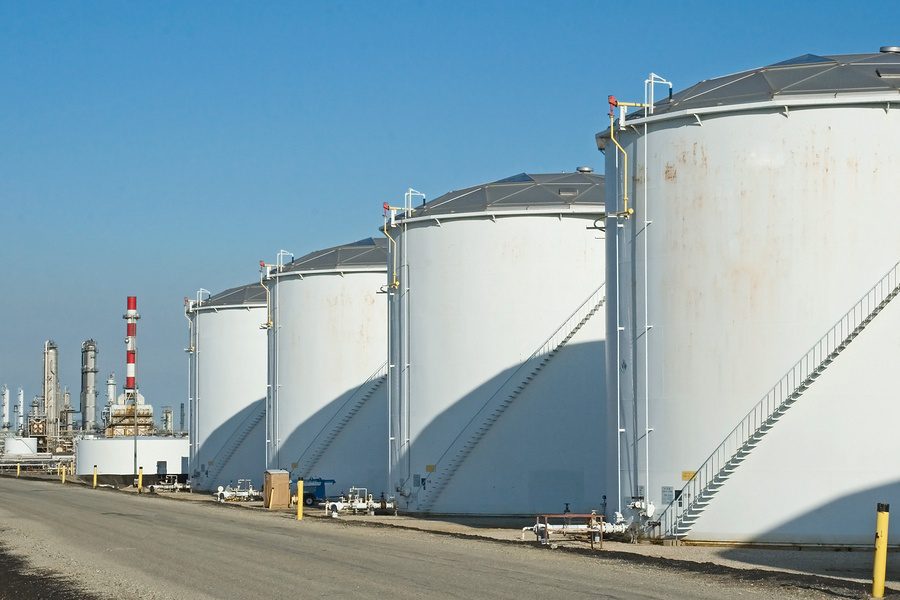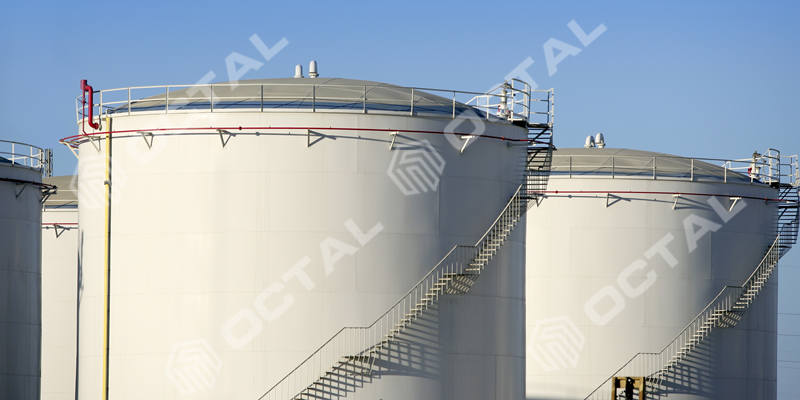Why API 650 Welding Inspection Is Essential in Ensuring Consistent and High-Performance Welds
A Step-by-Step Consider the Installation Process of Welding Inspection Techniques
Welding inspection is a vital process that guarantees architectural honesty and safety and security. The setup of evaluation techniques involves numerous organized steps, each essential to achieving reliable outcomes. From planning and device choice to carrying out visual and non-destructive tests, each phase needs careful attention. Recognizing these procedures can significantly enhance top quality guarantee in welding projects. What obstacles develop in implementing these strategies, and exactly how can they be effectively resolved?
Comprehending the Importance of Welding Assessment
Welding evaluation is a critical element of guaranteeing architectural integrity and safety and security in construction and production procedures. This practice entails assessing bonded joints for defects, making sure that they meet certain criteria and policies. By methodically gauging weld high quality, assessors can identify problems such as splits, voids, and incomplete blend, which can compromise the strength and longevity of structures.
The relevance of welding assessment extends beyond instant safety and security issues; it aids protect against costly failings and prospective risks in the long-term. Efficient examination methods foster conformity with industry requirements, consequently enhancing the general dependability of welded components. In addition, a durable evaluation process contributes to maintaining the reputation of makers and contractors, as it assures clients of the top quality of their jobs. Inevitably, recognizing the relevance of welding evaluation is essential for advertising secure building techniques and ensuring the longevity of important infrastructure and products.
Selecting the Right Tools for Inspection
When choosing the ideal devices for evaluation, it is important to consider the specific demands of the welding process and the materials involved. Various examination techniques, such as aesthetic, ultrasonic, and radiographic screening, require distinct tools customized to their one-of-a-kind demands. For visual assessments, tools like magnifying glasses and calipers are crucial for examining weld high quality. Ultrasonic screening requires specific devices with the ability of sending and obtaining acoustic waves to discover interior defects. Radiographic screening, on the other hand, uses X-ray or gamma-ray sources alongside delicate movie or digital detectors to disclose incongruities.
In addition, personal safety equipment (PPE) is vital to assure the safety and security of inspectors throughout evaluations. Selecting the right tools not just enhances the accuracy of evaluations however also contributes to the overall integrity and safety and security of the welding project. Consequently, a complete understanding of readily available devices and their applications is important for efficient welding assessment.
Preparing for the Evaluation Refine
Before starting the inspection procedure, it is important to develop a comprehensive plan that describes the extent and purposes of the evaluation. This strategy needs to consist of certain requirements that specify what constitutes appropriate quality in the welding job being evaluated. Identifying the pertinent codes and standards is crucial, as they will guide the examination requirements and techniques.
In addition, employees associated with the examination must be sufficiently trained and licensed in welding examination methods to guarantee integrity and accuracy. A checklist can be helpful in arranging the different aspects of the inspection, varying from devices readiness to environmental problems that could impact the assessment.

Logistical considerations such as scheduling, readily available sources, and interaction in between team members need to be attended to. By preparing methodically, examiners can enhance the performance of the analysis and make sure that all important elements are duly thought about prior to proceeding with the evaluation itself.
Performing Aesthetic Inspections

Performing visual evaluations is a necessary step in the welding evaluation process, needing cautious prep work to assure effective evaluation. Examiners should be acquainted with vital issue indications that can signify possible concerns in weld quality. By concentrating on these aspects, one can boost the general dependability of the assessment results.
Getting Ready For Visual Examination
Aesthetic assessment works as an important primary step in the welding assessment process, ensuring that any potential defects are identified early (API 650 Welding Inspection). Correct prep work is necessary for efficient visual inspection. Inspectors need to start by reviewing appropriate documents, including welding treatments and requirements, to recognize the task demands. They have to collect required devices, such as amplifying glasses, flashlights, and suitable individual protective equipment (PPE) A thorough exam of the assessment area is critical; examiners Read Full Report should confirm it is clean and cost-free of blockages. Additionally, it is essential to establish excellent illumination problems to enhance presence of welds. By taking these preparatory actions, inspectors can produce a setting for recognizing discrepancies and assuring the stability of the welded structures
Trick Problem Indicators
A thorough understanding of crucial defect indications is important during aesthetic assessments to assure the quality and security of welded joints. Examiners need to concentrate on certain indications such as cracks, porosity, undercuts, and incomplete combination. Fractures might show up as sharp lines and can compromise structural integrity. Porosity materializes as little openings that can damage weld toughness. Undercuts, which are grooves along the weld edge, can lead to tension concentration. Incomplete combination suggests that the weld steel did not properly bond with the base material, leading to a weak joint. By systematically recognizing these flaws, inspectors can determine compliance with sector criteria and improve the total integrity of bonded structures, eventually adding to more secure operational conditions.
Executing Non-Destructive Evaluating Techniques

Various non-destructive testing (NDT) techniques are integral to assuring the stability of welded structures without endangering their capability. These approaches enable inspectors to evaluate weld top quality and identify flaws without triggering damage to the products being checked. Typical NDT methods consist of ultrasonic screening, radiographic testing, magnetic fragment testing, and color penetrant screening. Each method offers a details function, dealing with various kinds of flaws such as splits, porosity, or incomplete blend.
Carrying out NDT techniques calls for a methodical strategy, starting with selecting the proper method based upon the products and the nature of the weld. Training employees in these techniques is crucial for accurate outcomes. In addition, developing clear procedures and requirements warranties uniformity throughout the assessment process. By incorporating NDT into the welding assessment operations, organizations can boost the dependability of their products while decreasing potential risks connected with architectural failures. This aggressive technique eventually adds to maintaining security and top quality requirements in bonded buildings.
Documenting and Evaluating Inspection Results
Effective paperwork and analysis of inspection outcomes are important elements of the welding evaluation procedure. Precise records of assessment findings offer as a referral for high quality guarantee and compliance with industry standards. API 650 Welding Inspection. Inspectors need to use organized types or electronic platforms discover this to log information such as the kind of weld, examination approaches utilized, and any type of inconsistencies determined during the evaluation
As soon as information is gathered, comprehensive analysis is vital. This entails comparing outcomes against established requirements to determine fads or repeating concerns. Statistical devices might be utilized to measure issues and evaluate their effect on overall weld high quality.
In addition, efficient communication of findings to relevant stakeholders is vital. Records and recaps need to be succinct and clear, highlighting key understandings and recommendations for restorative activities. By systematically documenting and evaluating evaluation outcomes, organizations can promote constant renovation in welding methods and improve product honesty.
Often Asked Concerns
What Credentials Are Needed to End Up Being a Welding Inspector?
To end up being a welding assessor, one usually needs pertinent qualifications such as AWS CWI, along with experience in welding techniques, knowledge of welding codes, and efficiency in assessment strategies to guarantee top quality and safety standards.
How Frequently Should Welding Inspections Be Conducted?
Welding inspections must be carried out on a regular basis, normally after each weld is finished, and regularly during tasks. Variables find out here now such as job intricacy, market criteria, and governing requirements can influence the regularity of these examinations.
What Is the Cost of Welding Assessment Solutions?
The cost of welding evaluation services differs substantially based on aspects such as task complexity, place, and size. Generally, costs vary from $100 to $150 per hour, with extra charges for specialized screening and accreditations.
Are There Certifications for Welding Inspectors?
Yes, there are different accreditations for welding inspectors, consisting of those used by the American Welding Culture (AWS) and the International Institute of Welding (IIW) These accreditations ensure inspectors possess the necessary skills and knowledge for reliable analyses.

Exactly how Do I Select an Inspection Service Company?
To select an evaluation service supplier, one should review qualifications, experience, industry online reputation, and consumer reviews. In addition, comparing solution offerings and rates can aid ensure the chosen copyright satisfies details task requires successfully.
Furthermore, workers included in the evaluation has to be properly trained and certified in welding inspection strategies to assure integrity and precision. Carrying out aesthetic examinations is an important action in the welding inspection procedure, calling for careful preparation to assure efficient assessment. Aesthetic assessment serves as an essential very first step in the welding assessment procedure, ensuring that any kind of potential issues are identified early. Reliable documentation and evaluation of evaluation results are important parts of the welding evaluation procedure. Welding inspections ought to be conducted regularly, commonly after each weld is finished, and regularly during tasks.